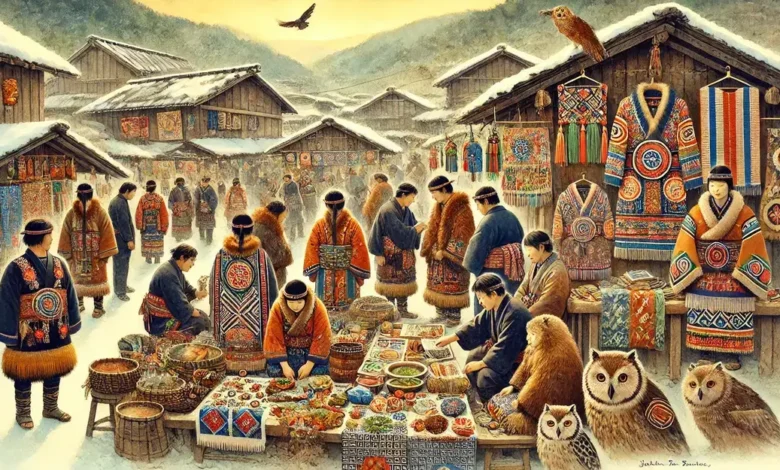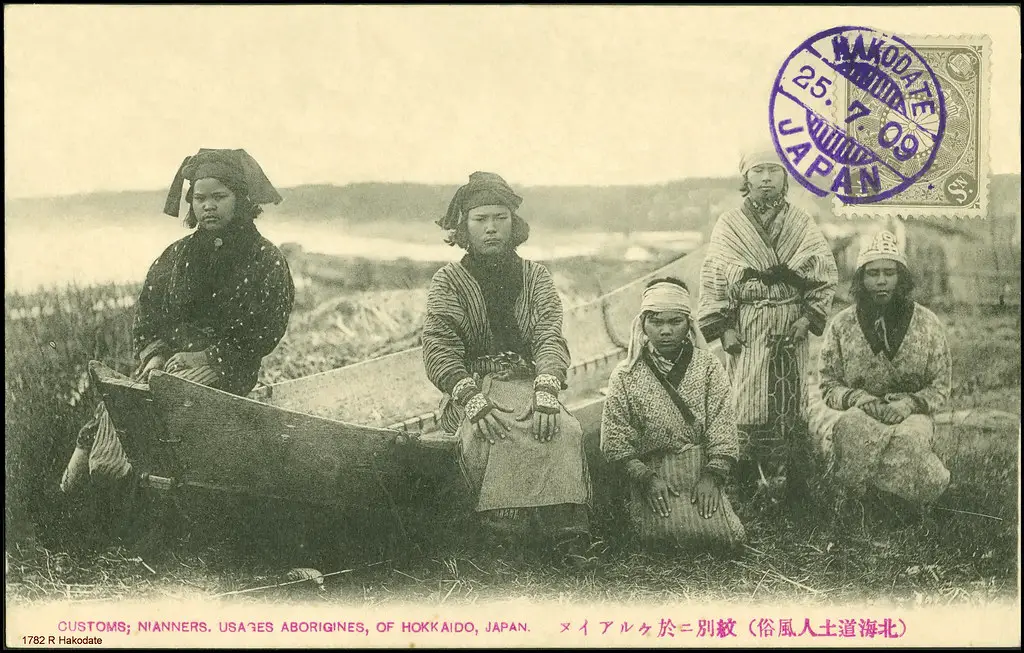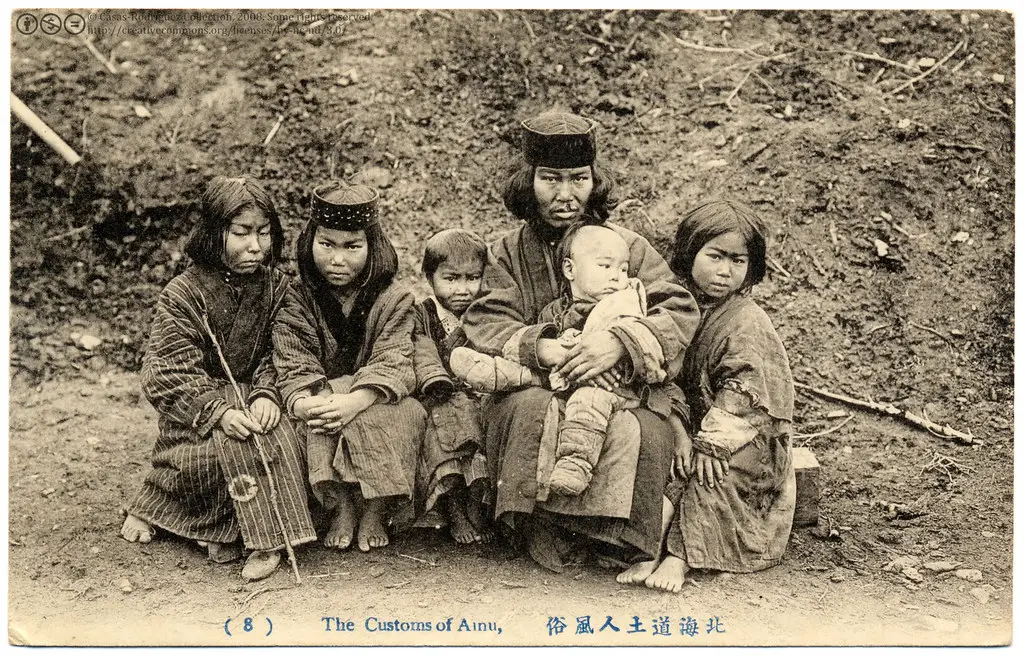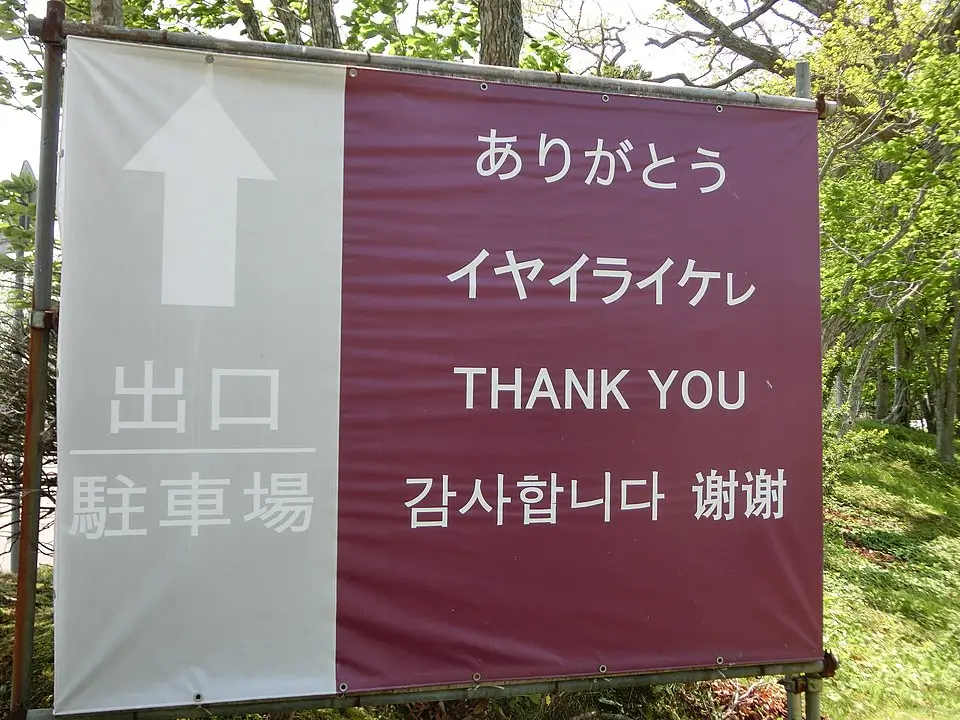Who are the Ainu People? Uncovering the Rich Culture

The Ainu people are a unique group who live in the northern parts of Japan, including Hokkaido and Northeast Honshu. They also live in areas around the Sea of Okhotsk, like Sakhalin, the Kuril Islands, the Kamchatka Peninsula, and the Khabarovsk Krai. These places are known to them as “Ainu Mosir”, which means ‘the land of the Ainu’. The Ainu have lived in these areas long before the arrival of the modern Japanese and Russians.
The Ainu have their own language, traditions, and beliefs that are different from those of the Japanese. However, their culture and language are at risk of disappearing, as many Ainu have been assimilated into Japanese society.
History of the Ainu People
The Ainu people are believed to be descendants of the Jomon people, who lived in Japan around 14,000 BC. The Ainu culture was established around the 12th or 13th century. They originally lived in northern parts of Japan, including Hokkaido, and also in areas around the Sea of Okhotsk, like Sakhalin and the Kuril Islands. These areas are known to them as “Ainu Mosir”, which means ‘the land of the Ainu’.

The Ainu moved around a lot. They usually set up their homes along the shore, with houses in a single line parallel to the shore. On Hokkaido, they had permanent settlements along the rivers, which were rich in fish.
The Ainu had some tough times with their neighbors. During the Tokugawa period (1603–1867), the Japanese started taking over Ainu lands. This led to many battles and conflicts6. Despite these challenges, the Ainu people have managed to keep their unique culture alive. Today, they continue to live in northern Japan and other areas, keeping their traditions and history alive for future generations.
Geographic Distribution
The Ainu people originally lived in the northern parts of Japan, including Hokkaido and Northeast Honshu. They also lived in areas around the Sea of Okhotsk, such as Sakhalin, the Kuril Islands, the Kamchatka Peninsula, and the Khabarovsk Krai. These areas are known to them as “Ainu Mosir”, which means ‘the land of the Ainu’.

Today, the Ainu people live in different parts of Japan, not just Hokkaido. Most of the Ainu population, which could be several tens of thousands or more, live in Sapporo and other communities across Hokkaido. A large number of Ainu have also moved away from Hokkaido to live in other cities such as Tokyo or Osaka for school, work, or marriage. There are also Ainu cultural facilities in Hokkaido, like the Upopoy National Ainu Museum and Park, where people can learn about Ainu culture.

Language and Literature
The Ainu people have their own language, called Ainu. It’s different from Japanese and doesn’t change verbs to show time, like past or future. It also has special ways to show if a word is about one thing or many things. But, not many people speak Ainu today. That’s why it’s called an “Endangered Language”.
People are working hard to keep the Ainu language alive. There’s a cool project called “AI Pirika” that uses computer science to help preserve the Ainu language. Also, some schools in Hokkaido, where many Ainu live, are teaching the Ainu language.
The Ainu have a rich tradition of storytelling, which is a big part of their culture. They have special songs and poems called “yukar” that tell stories about their history and beliefs. These stories are passed down from generation to generation, helping to keep the Ainu culture alive.

Cultural Practices
The Ainu people have a rich culture that is full of unique traditions. One of these is their traditional clothing, called the “attush” robe. This robe is made from the soft inner strips of elm bark. Women would collect the bark in spring and soak it until it separated into fibers. These fibers were then woven into fabric and sewn into a robe. The Ainu also had special ceremonies and rituals. One of the most important is the “Iomante” ceremony, where a bear cub is raised like a family member. When the time comes, the bear is sent back to the spirit world in a special ceremony.
Nature and animals play a big role in Ainu culture. They believe that spirits, called “kamuy”, live in everything around us. This includes animals, plants, fire, water, wind, mountains, and rivers. The Ainu show respect to these spirits and believe they bring gifts like meat and fur.

Art and Craftsmanship
The Ainu people are known for their amazing art and craftsmanship. They are really good at woodcarving and embroidery. They make beautiful wooden trays called “Nibutani ita” and clothing from a fabric called “attus”. The patterns on these items often come from nature, like thorns, gentle swirls, eyes, and fish scales.
Music and dance are also important parts of Ainu culture. They have two main musical instruments: the “tonkori”, a kind of guitar, and the “mukkuri”, a jaw harp usually played by women. They also have a traditional dance that involves a large circle of dancers. Some dances imitate animals or insects, while others are rituals or just for fun.
Ainu art has had a big influence on modern culture. For example, an Ainu artist named Bikky Sunazawa helped bring Ainu art into the world of fine arts. His work helped people see the beauty and importance of Ainu culture.
Religion and Beliefs
The Ainu people have a special way of looking at the world. They believe in “animism”, which means they think everything around us, like animals, plants, and even things like rocks and rivers, has a spirit. They call these spirits “kamuy”. The Ainu believe that these spirits come from a different world and visit us here on Earth.
There are many important kamuy in Ainu culture. For example, there’s Kamuy Fuchi, the goddess of the hearth, who looks after homes and families. There’s also Kim-un-kamuy, the god of bears and mountains, and Repun Kamuy, the god of the sea. Each of these kamuy has a special role and helps to keep the world in balance.
The Ainu have many rituals and festivals to honor these kamuy. One of the most famous is the Bear Festival, or “Iomante”. In this ceremony, they send the spirit of a bear back to the spirit world5. They also have other festivals, like the Hometown Icharupa Festival in August, the Humpe Icharupa Festival (Whale Festival) in September, and the Shishamo Festival in November. These rituals and festivals help the Ainu to stay connected with the kamuy and show their respect for the natural world.
Epilogue
The Ainu people are a very special group with a rich history and unique culture1. They have their own language, traditions, and beliefs that are different from those of the Japanese. Their art, music, and stories tell us a lot about their way of life and their deep respect for nature.
Looking to the future, there is hope for the Ainu community. People are working hard to keep the Ainu culture alive. There are projects to help preserve the Ainu language, and movements to get recognition and justice for the Ainu people. Schools are teaching about Ainu history and culture, and there are museums where people can learn about the Ainu. With these efforts, we can hope that the Ainu culture will continue to thrive and be appreciated by future generations.




